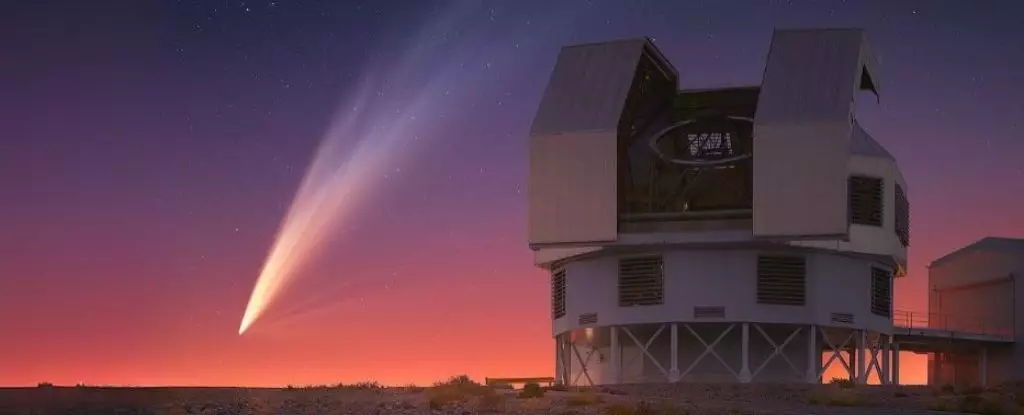Comets have captivated humanity for centuries, embodying both wonder and uncertainty as they grace our skies. Every appearance offers a new canvas for astronomical excitement, and Comet C/2024 G3 ATLAS, discovered in April 2024, exemplifies this sentiment. As the comet approaches perihelion, the astronomical community holds its breath, pondering whether it will dazzle us with an extraordinary display or fade into obscurity.
Unearthed by the Asteroid Terrestrial-impact Last Alert System (ATLAS), Comet G3 entered our cosmic radar on the night of April 25, 2024. This discovery marked the beginning of a lengthy observation period, filled with speculation and anticipation. Its trajectory indicated a close encounter with the Sun in early 2025, a pivotal moment for any comet, fraught with the risk of disintegration or spectacular survival.
Comparisons abound when assessing comets, as their natural histories are as diverse as they are unpredictable. For instance, C/2012 S1 ISON, which was initially heralded as a promising comet, shattered into fragments during its perihelion passage in 2013. In contrast, W3 Lovejoy defied expectations, surviving an ominously close approach to the Sun and proving its mettle with a majestic display later that same year. G3 ATLAS found itself in a similar scenario, racing toward its closest approach to the Sun on January 13, 2025, at a mere 14 million kilometers away.
The Great Anticipation
On its journey, G3 ATLAS captured the attention of astronomers and enthusiasts alike. The Solar and Heliospheric Observatory (SOHO) was pivotal in monitoring the comet as it ventured toward perihelion. The brightened comet reaching a fascinating -3.8 magnitude became the brightest comet observed since P1 McNaught in 2007. For many, this was a moment to rejoice, sparking a wave of public interest and a flurry of amateur images documenting its tail.
However, the visibility of G3 ATLAS varied by location, reminiscent of other great comets that seemed to favor southern skies. Northern hemisphere observers were often disappointed during this celestial event, as the comet graced the ecliptic only for a short window—January 8 to January 15. Despite these limitations, skilled astrophotographers still managed to capture the elusive beauty of G3 ATLAS, its dusty tail stretching elegantly across the evening sky.
The Evasive Nature of Comets
Interestingly, a peculiar characteristic of comets lies not only in their visual splendor but also in the dynamics of their tails—the dust and ion tails often trailing behind due to solar winds. G3 ATLAS exemplified this phenomenon, with its tail extending in a distinctive pattern, almost as if leading the comet further along its orbital path instead of following it. However, as the comet approached perihelion, observations indicated a troubling trend: despite an initially brilliant facade, the nucleus of G3 ATLAS began to fade, leading to its moniker as a “headless comet.”
The display took on a unique striped appearance, a final flourish hinting at the comet’s imminent decline. By late January, as G3 ATLAS settled into the constellation Piscis Austrinus, its brightness diminished to +5 magnitude—still a sight for the dedicated observer, albeit less spectacular than earlier predictions had suggested.
Comet G3 ATLAS has a fascinating chronological journey ahead, with estimates suggesting it follows a 160,000-year orbit before potentially exiting the inner solar system. Its fragmented remnants may someday return, trailing behind it an echo of what once was—a gentle reminder of the impermanence of beauty in the cosmos.
As the dust settles on G3 ATLAS, it remains a symbol of the enigmatic nature of comets, primal forces of nature that rally celestial fascination while leaving us longing for their next enchanting return. Observers and enthusiasts alike may be disheartened by its fading luminance but can take solace in the profound experience of witnessing its fleeting journey. Ultimately, the adventure of comet chasing remains an aspirational pursuit—forever shrouded in mystery, beauty, and the promise of future wonders beyond the stars.


Leave a Reply